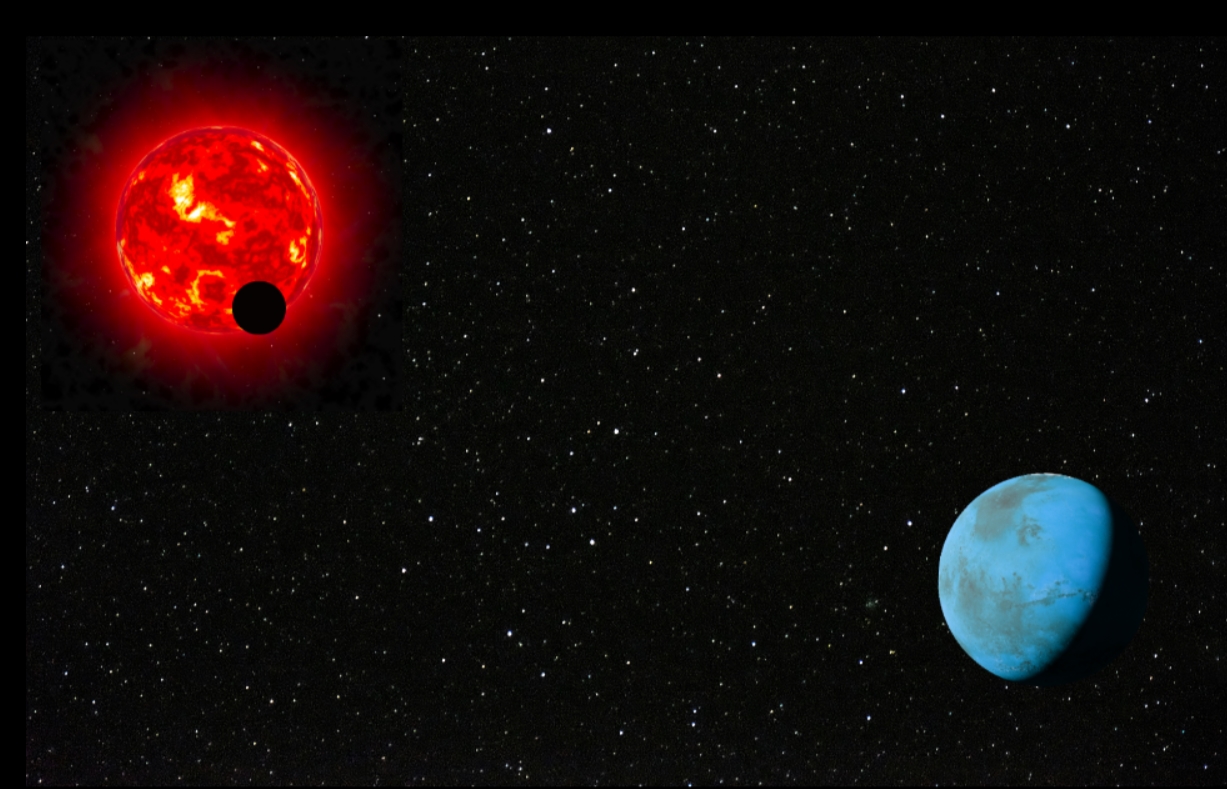A new planetary system composed of a super-Earth and a mini-Neptune, key to understanding how planets form
The Institute of Astrophysics of Andalusia (IAA-CSIC) leads the discovery of TOI-2096, a unique planetary system
A scientific team, led by the Institute of Astrophysics of Andalusia (IAA-CSIC) and with the participation of the University of Granada, has discovered a unique planetary system. Called TOI-2096, it is composed of a super-Earth and a mini-Neptune, orbiting a cool, nearby star in a synchronised dance, and could function as a Rosetta stone for understanding how planetary formation works.
The system was identified by NASA's Transiting Exoplanet Survey Satellite (TESS), a space mission that searches for planets around nearby bright stars. "TESS is conducting an all-sky search for planets using the transit method, that is, monitoring the stellar brightness of thousands of nearby stars in expectation of a slight dimming, which could be caused by a planet passing between the star and the observer. However, despite its power to detect new worlds, TESS mission needs support from ground-based telescopes to confirm the planetary nature of the detected signals", explains Francisco J. Pozuelos Romero, researcher at the IAA-CSIC and lead author of the paper.

A very particular configuration
"The planets TOI-2096 b (super-Earth) and TOI-2096 c (minineptune) were observed with an international network of ground-based telescopes, allowing them to be confirmed and characterised. "A thorough analysis of the data showed that the two planets were in resonant orbits, i.e. for every two orbits of TOI-2096 b, TOI-2096 c makes one. This configuration is very particular, and because of it the planets interact strongly in a gravitational way, which allows us to obtain their masses, something we are doing right now with ultra-precise measurements from the 2.2-metre telescope at Calar Alto Observatory" says Pedro J. Amado, researcher at IAA-CSIC and co-author of the paper.
The researchers estimate that the radius of TOI-2096 b is 1.2 times larger than that of the planet Earth (hence the name super-Earth). Likewise, the radius of TOI-2096 c is 55% smaller than that of Neptune (1.9 times Earth's radius), which is why it is called a mini-Neptune. These sizes are really interesting because they could shed light on the anomaly known as Radius Valley, or the absence of exoplanets with radii between 1.5 and 2.5 Earth radii, something that currently has no accepted explanation.
Thanks to the global analysis carried out on the high-performance computing servers at the University of Granada, we were able to understand that this is a unique system", says Juan Carlos Suárez, researcher at the University of Granada and co-author of the study. “The formation of small planets of less than four Earth radii is still a mystery today, as there are different models that try to explain how planets with sizes between Earth and Neptune form, but none of them fit the observations. TOI-2096 is the only known system that has a small, probably rocky, planet and a larger one just the right size where all the models contradict each other. In other words, TOI-2096 may be the Rosetta stone we have been looking for to understand how planetary systems form”.
"In addition, thanks to the relative size of these planets and their star, together with the brightness of the star, this system is among the best for detailed studies with the James Webb Space Telescope, for which we are coordinating with other universities and research centres. These studies will allow us to know more precisely how the system formed and whether, as we believe, the planet TOI-2096 c is an oceanic world, which would open up a whole range of possibilities for future studies," concludes Francisco J. Pozuelos (IAA-CSIC).
F.J. Pozuelos, et al. A super-Earth and a mini-Neptune near the 2:1 MMR straddling the radius valley around the nearby mid-M dwarf TOI-2096, Astronomy & Astrophysics, https://doi.org/10.1051/0004-6361/202245440
Instituto de Astrofísica de Andalucía (IAA-CSIC)
Unidad de Divulgación y Comunicación
Silbia López de Lacalle - sll[arroba]iaa.es - 958230676
https://www.iaa.csic.es
https://divulgacion.iaa.csic.es

